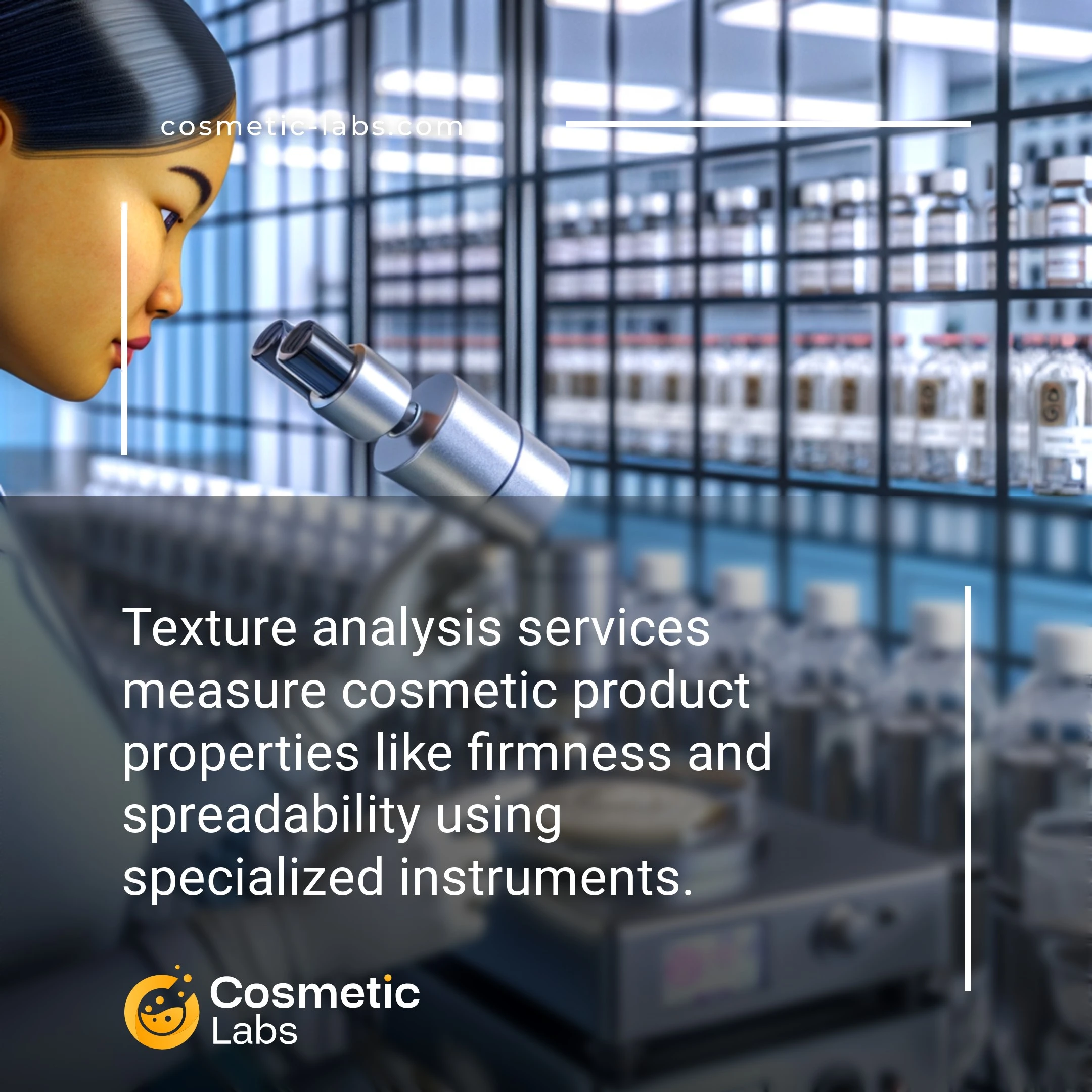Texture Analysis Services for Reliable Cosmetic Product Development

What is Texture analysis?
Texture analysis services measure how your cosmetic products feel and perform through specialized instruments that test spreadability, firmness, and pickup force. Labs use texture analyzers to generate precise data on your cream’s consistency or serum’s flow behavior, helping you match competitor benchmarks or achieve specific sensory targets. This objective measurement replaces subjective feel tests, giving you repeatable results that predict consumer satisfaction before production scales up.
Why do you need this service?
Cosmetic labs apply texture analysis to optimize cream spreadability and ensure lotions achieve the exact glide consumers expect. Our partner laboratories measure viscosity profiles and firmness values that predict whether your serum will feel lightweight or if your body butter maintains consistent luxurious texture across different temperatures and storage conditions.
Who provides Texture analysis services?
All cosmetic labs providing Texture analysis services
There is no company providing these services at the moment.
Texture Analysis Services
Texture analysis gives you precise data about how your cosmetic products feel, spread, and perform on skin. Labs on our platform use texture analyzers to measure firmness, elasticity, adhesiveness, and spreadability—the physical properties that make or break consumer satisfaction.
Standard Texture Testing Methods
Professional cosmetic labs run texture profiles using specialized equipment like TA.XTplus texture analyzers. These instruments measure force, distance, and time to create detailed performance maps of your formulations.
- Compression tests for creams and gels (firmness values in grams)
- Penetration analysis for balms and sticks
- Spreadability measurements using TTC spreadability rigs
- Back extrusion tests for viscous products
- Adhesion testing for masks and patches
Most labs provide results within 5-7 business days, including graphs and numerical data you can use for claims substantiation.
Applications for Product Development
Texture data helps you match competitor products, verify batch consistency, and predict consumer preferences. Labs test products at different temperatures to ensure stability—what feels perfect at 20°C might separate at 40°C.
Common applications include:
- Comparing prototype textures to benchmark products
- Testing sensory attributes before expensive consumer panels
- Validating texture claims like “lightweight” or “non-greasy”
- Monitoring texture changes during stability testing
Partner labs typically test 3-5 samples per batch and provide statistical analysis to identify significant differences between formulations.
Practical Applications of Texture Analysis in Cosmetic Development
Texture analysis delivers quantifiable data that transforms subjective sensory claims into measurable product attributes cosmetic brands can market with confidence.
Quality Control During Scale-Up Production
Labs use texture analysis services to monitor batch consistency when transitioning from bench-top formulations to pilot batches. Penetration tests measure cream firmness within ±5% tolerance, while spreadability assessments track viscosity changes across temperature ranges.
Production teams rely on these metrics to adjust homogenization speeds or emulsifier ratios before full-scale manufacturing begins. This prevents costly reformulation after 10,000-unit production runs.
Competitive Benchmarking for Product Development
Development teams submit competitor products alongside prototypes for side-by-side texture profiling. Labs measure specific parameters like initial slip, play time, and after-feel using calibrated instruments that detect differences human panels might miss.
These comparative profiles guide formulation adjustments—matching a luxury cream’s silky glide or differentiating with longer playtime than market leaders. Results translate directly into marketing claims backed by instrumental data.
| Texture Parameter | Testing Method | Typical Range | Marketing Application |
|---|---|---|---|
| Firmness | Cone penetration | 150-300g force | “Rich, luxurious texture” |
| Spreadability | Parallel plate | 2-8 N·mm | “Effortless application” |
| Stickiness | Probe withdrawal | 0.5-2.0 N | “Non-greasy finish” |
| Elasticity | Compression cycle | 60-85% recovery | “Bouncy gel texture” |
Ready to validate your product’s texture claims with instrumental analysis? Connect with specialized cosmetic labs on our platform that offer comprehensive texture profiling services tailored to your formulation needs.
